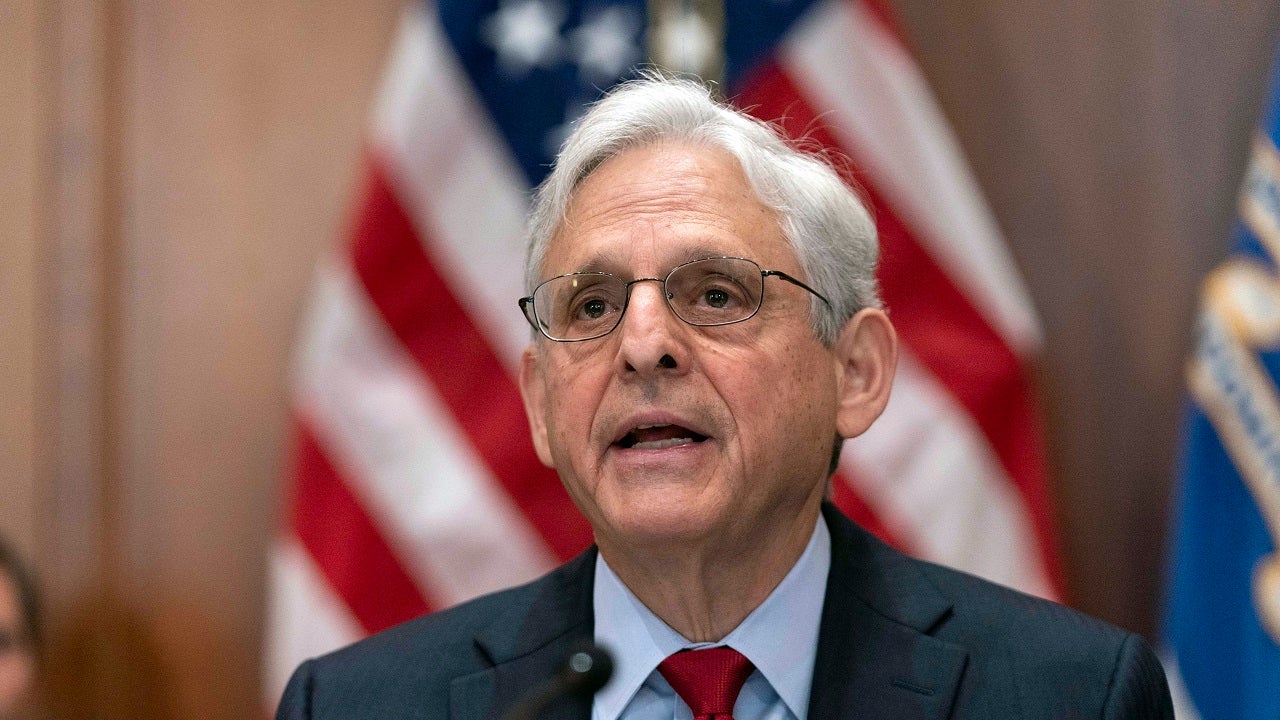Business
Facing Bankruptcy After a $700 Million Bailout

A beleaguered trucking business that received a $700 million pandemic-era loan from the federal government may be forced to file for bankruptcy protection this summer amid a dispute with its union, a development that could leave American taxpayers stuck with a failed company.
The financial woes at the business, Yellow, which previously went by the name YRC Worldwide, have been building for years. The company lost more than $100 million in 2019 and has more than $1.5 billion in outstanding debt, including the government loan. In 2022, YRC, which ships meal kits, protective equipment and other supplies to military bases, agreed to pay $6.85 million to settle a federal lawsuit that accused it of defrauding the Defense Department.
In 2020, the Trump administration, which had ties to the company and its executives, agreed to give the firm a pandemic relief loan in exchange for the federal government assuming a 30 percent equity stake in the company.
Three years later, Yellow is on the verge of going bankrupt.
Since receiving the loan, the company has changed its name, restructured its business and seen its stock price plummet. As of the end of March, Yellow’s outstanding debt was $1.5 billion, including about $730 million that is owed to the federal government. Yellow has paid approximately $66 million in interest on the loan, but it has repaid just $230 of the principal owed on the loan, which comes due next year.
On Tuesday, Yellow sued the International Brotherhood of Teamsters for blocking the company’s restructuring plan and accused the union of causing more than $137 million in damages. The company said that it was taking “immediate steps to try to save itself” and that the union was trying to “cause Yellow’s economic ruin.”
The company’s financial plight is the latest example of how some of the trillions of dollars pumped out quickly during the pandemic were misdirected, mismanaged or obtained fraudulently. Federal watchdogs and government agencies have expressed alarm at signs of fraud and failing loans.
The office of the special inspector general for pandemic recovery, an independent agency within the Treasury Department that scrutinizes some of the relief money, warned last month that it was seeing an “alarming rate of defaults by borrowers who are failing to pay even the interest payments on the loans.” The office warned that the number of defaults on pandemic loans could increase over the next two years as payments come due.
On Tuesday, the inspector general for the U.S. Small Business Administration, which disbursed about $1.2 trillion in pandemic loans, said in a report that over $200 billion, or 17 percent, of the money was disbursed to “potentially fraudulent actors.”
Yellow’s loan enabled the company to stay afloat for a while and embark on a restructuring plan. But economic headwinds and a fight with the Teamsters union over the terms of a new contract have put Yellow in a precarious financial position.
In May, the company reported a first quarter loss of $54.6 million and Moody’s downgraded its credit rating out of concern about its dispute with the union. Yellow’s stock price has fallen by more than 70 percent to $0.99 a share over the past year.
The company has warned union officials that the standoff is putting Yellow’s fate at risk. Union officials claim that the company is being mismanaged and that the concessions it is seeking are unfair.
“Yellow has been unable to effectively manage itself for a long time — now the company says that it will be out of money by August,” Sean O’Brien, general president of the International Brotherhood of Teamsters, said in a video message broadcast on Facebook to Yellow union members this month. “These executives have no idea what they are doing, they have driven this company into the ground.”
In a statement on Tuesday, Mr. O’Brien said that the allegations in Yellow’s lawsuit were “unfounded and without merit” and said that the company’s management failed its work force by being unable to live up to the terms of their contract.
The union’s current contract expires next year. The main points of contention are over whether hundreds of Yellow truckers would have to start loading and unloading freight at docks and a proposal that would give the company more power over where truckers have to work. Yellow needs the union to agree to the next stage of its restructuring plan so that it can seek additional financing and repay its debts.
The company said that it still intended to repay the loan that it received from the government and that it was negotiating in good faith and trying to save the jobs of its 30,000 workers.
“Yellow is engaging with all stakeholders in Washington and remains determined to negotiate a contract with the I.B.T. that works for employees, customers and shareholders,” Darren Hawkins, chief executive of Yellow, said, referring to the union. “Protecting 30,000 jobs is Yellow’s top priority.
In the lawsuit, Yellow said that it had sought the Biden administration’s assistance in brokering a deal to save the company but that the White House’s efforts were rebuffed by the union. The lawsuit says that Yellow had contacted Senator Bernie Sanders of Vermont for help and claimed that Mr. Sanders’s office said it was not interested in helping because Yellow was awarded the loan by the Trump administration.
The White House acknowledged it had discussions with Yellow and the union but declined to weigh in further on the matter.
“Our administration has been in touch with both parties, but we’re not going to comment on a legal dispute,” Michael Kikukawa, a White House spokesman, said. “The loan in question was provided by the Trump administration.”
Mr. Sanders’s office did not respond to a request for comment. A Treasury Department spokeswoman said that the agency continued to monitor loans made through pandemic recovery programs during the prior administration.
The Treasury Department also holds nearly 30 percent of Yellow’s common stock and the loan is secured by the company’s assets. If Yellow declares bankruptcy and has to liquidate, the U.S. government will take over much of the company’s trucking fleet and real estate holdings.
Yellow’s loan, which was awarded as part of the $2.2 trillion pandemic relief legislation that Congress passed in 2020, had raised questions of cronyism from the beginning.
A report last year produced by Democratic staff of the House Select Subcommittee on the Coronavirus Crisis found that the money had been doled out over the objections of career officials at the Defense Department and suggested that senior Trump administration officials had intervened to ensure that Yellow received special treatment despite concerns about its eligibility to receive relief funds. In addition to deep ties to the Trump administration, the company, which for years faced legal and financial troubles, also had a strong lobbying presence in Washington.
Although it is questionable whether Yellow is critical to national security, it is one of the largest freight trucking companies in the United States and its downfall would have a ripple effect across the nation’s supply chain.
UPS and ABF Freight have also been engaged in negotiations with the Teamsters over their contracts, amplifying uncertainty across the sector.
Chris Spear, chief executive of the American Trucking Associations, urged the union and Yellow to work with a federal mediator on a new contract to make sure that the company does not go bankrupt.
“It’s going to seriously impact the economy and the supply chain,” Mr. Spear said. “Capacity is already tight.”
Bruce Chan, a transportation analyst at the investment bank Stifel, said the shuttering of Yellow would lead to significant increases in the costs of shipping in the United States and force firms to find other carriers for their “homeless” freight. He noted that vulnerable trucking companies had been struggling under the pressure of changing consumer demand, which has shifted toward services and away from goods.
Although Yellow has found ways to survive financial troubles in the past, Mr. Chan likened the current union dispute to “squeezing blood from a stone.”
“It looks pretty tough for them,” he said.

Business
Edison stock turns volatile as growing blame for wildfires lands on the power company

Southern California’s catastrophic fires have rocked the stock of Edison International, the parent company of Southern California Edison, as accusations and lawsuits about the utility’s potential role in starting the fires mount.
Shares of Edison International closed up 5% at $61.30 on Wednesday after plunging 23% this month, making it one of the worst performers on the Standard & Poor’s 500. The rebound came after Ladenburg Thalmann analysts upgraded their rating of the stock to neutral from sell, saying that their target price of $56.50 a share reflected worst-case outcomes associated with the current wildfires.
“At this time, it is too early to discern what the outcomes will be with respect to the impact of the fires on the California Wildfire Insurance Fund solvency and/or the future earnings of Edison International,” the analysts wrote, according to Barron’s. “An initial assessment of SCE’s role in the start of the fires will likely not occur until the summer of 2025 at the earliest.”
State lawmakers established the wildfire fund in the wake of wildfires several years ago after Wall Street investors lost confidence and ratings agencies threatened to downgrade California’s investor-owned utilities.
Market analyst Zacks downgraded Edison International stock from outperform to neutral after the fires started last week. Zacks predicted Edison’s operating revenue would increase during 2025 and 2026, while acknowledging that “the company has been incurring significant wildfire-related costs” and that “higher-than-expected decommissioning costs could materially impact the company’s operating results.”
RBC Capital Markets, another analyst, had a loftier view of Edison as recently as October when it called the utility “a high quality operator, with investor confidence around wildfire risk improving from best in class mitigation efforts.”
The fallout from the fires is an abrupt disruption for a company that had been surging in recent months. In its most recent quarterly report, the company posted a profit of $516 million, or $1.33 per share, compared with $155 million, or 40 cent per share, in the third quarter of last year.
“Our team has achieved remarkable success over the last several years managing unprecedented climate challenges, making our operations more resilient and positioning us strongly for the growth ahead,” President Pedro J. Pizarro said in the report.
Fire agencies are investigating whether downed Southern California Edison utility equipment played a role in igniting the 800-acre Hurst fire near Sylmar, company officials have acknowledged.
The company issued a report Friday saying that a downed conductor was discovered at a tower in the vicinity of the Hurst fire, but that it “does not know whether the damage observed occurred before or after the start of the fire.” The fire is nearly fully contained, according to the California Department of Forestry and Fire Protection.
SCE is also under scrutiny for possibly being involved in sparking the Eaton fire that has burned 14,000 acres and destroyed thousands of structures, wiping out whole swaths of Altadena, where at least 16 people died in the blaze.
On Tuesday the Newport Beach law firm of Bridgford, Gleason & Artinian filed a mass action complaint in Los Angeles Superior Court against SCE regarding the Eaton fire on behalf of victims including Jeremy Gursey, whose Altadena property was destroyed in the fire.
“Based upon our investigation, our discussions with various consultants, the public statements of SCE, and the video evidence of the fire’s origin, we believe that the Eaton Fire was ignited because of SCE’s failure to de-energize its overhead wires which traverse Eaton Canyon—despite a red flag PDS wind warning issued by the national weather service the day before the ignition of the fire,” lawyer Richard Bridgford said in a statement.
The firm said it has represented more than 10,000 California fire victims in past suits against Pacific Gas & Electric Co. and SCE. Bridgford told Yahoo Finance that his inbox is full of Southern California residents seeking to participate in the Eaton fire lawsuit and that he anticipates “there’ll be hundreds joining.”
The most extreme level of a red flag fire warning, a “particularly dangerous situation,” returned to parts of Los Angeles and Ventura counties Wednesday morning, heightening concerns about the potential for new fires.
“The danger has not yet passed,” Los Angeles Fire Department Chief Kristin Crowley said during a news conference Wednesday. “So please prioritize your safety.”
Business
Albania Gives Jared Kushner Hotel Project a Nod as Trump Returns

The government of Albania has given preliminary approval to a plan proposed by Jared Kushner, Donald J. Trump’s son-in-law, to build a $1.4 billion luxury hotel complex on a small abandoned military base off the coast of Albania.
The project is one of several involving Mr. Trump and his extended family that directly involve foreign government entities that will be moving ahead even while Mr. Trump will be in charge of foreign policy related to these same nations.
The approval by Albania’s Strategic Investment Committee — which is led by Prime Minister Edi Rama — gives Mr. Kushner and his business partners the right to move ahead with accelerated negotiations to build the luxury resort on a 111-acre section of the 2.2-square-mile island of Sazan that will be connected by ferry to the mainland.
Mr. Kushner and the Albanian government did not respond Wednesday to requests for comment. But when previously asked about this project, both have said that the evaluation is not being influenced by Mr. Kushner’s ties to Mr. Trump or any effort to try to seek favors from the U.S. government.
“The fact that such a renowned American entrepreneur shows his interest on investing in Albania makes us very proud and happy,” a spokesman for Mr. Rama said last year in a statement to The New York Times when asked about the projects.
Mr. Kushner’s Affinity Partners, a private equity company backed with about $4.6 billion in money mostly from Saudi Arabia and other Middle East sovereign wealth funds, is pursuing the Albania project along with Asher Abehsera, a real-estate executive that Mr. Kushner has previously teamed up with to build projects in Brooklyn, N.Y.
The Albanian government, according to an official document recently posted online, will now work with their American partners to clear the proposed hotel site of any potential buried munitions and to examine any other environmental or legal concerns that need to be resolved before the project can move ahead.
The document, dated Dec. 30, notes that the government “has the right to revoke the decision,” depending on the final project negotiations.
Mr. Kushner’s firm has said the plan is to build a five-star “eco-resort community” on the island by turning a “former military base into a vibrant international destination for hospitality and wellness.”
Ivanka Trump, Mr. Trump’s daughter, has said she is helping with the project as well. “We will execute on it,” she said about the project, during a podcast last year.
This project is just one of two major real-estate deals that Mr. Kushner is pursuing along with Mr. Abehsera that involve foreign governments.
Separately, the partnership received preliminary approval last year to build a luxury hotel complex in Belgrade, Serbia, in the former ministry of defense building, which has sat empty for decades after it was bombed by NATO in 1999 during a war there.
Serbia and Albania have foreign policy matters pending with the United States, as both countries seek continued U.S. support for their long-stalled efforts to join the European Union, and officials in Washington are trying to convince Serbia to tighten ties with the United States, instead of Russia.
Virginia Canter, who served as White House ethics lawyer during the Obama and Clinton administrations and also an ethics adviser to the International Monetary Fund, said even if there was no attempt to gain influence with Mr. Trump, any government deal involving his family creates that impression.
“It all looks like favoritism, like they are providing access to Kushner because they want to be on the good side of Trump,” Ms. Canter said, now with State Democracy Defenders Fund, a group that tracks federal government corruption and ethics issues.
Business
Craft supplies retailer Joann declares bankruptcy for the second time in a year

The craft supplies and fabric retailer Joann filed for bankruptcy for the second time in less than a year, as the chain wrestles with declining sales and inventory shortages, the company said Wednesday.
The retailer emerged from a previous Chapter 11 bankruptcy process last April after eliminating $505 million in debt. Now, with $615 million in liabilities, the company will begin a court-supervised sale of its assets to repay creditors. The company owes an additional $133 million to its suppliers.
“We hope that this process enables us to find a path that would allow Joann to continue operating,” said interim Chief Executive Michael Prendergast in a statement. “The last several years have presented significant and lasting challenges in the retail environment, which, coupled with our current financial position and constrained inventory levels, forced us to take this step.”
Joann’s more than 800 stores and websites will remain open throughout the bankruptcy process, the company said, and employees will continue to receive pay and benefits. The Hudson, Ohio-based company was founded in 1943 and has stores in 49 states, including several in Southern California.
According to court documents, Joann began receiving unpredictable and inconsistent deliveries of yarn and sewing items from its suppliers, making it difficult to keep its shelves stocked. Joann’s suppliers also discontinued certain items the retailer relied on.
Along with the “unanticipated inventory challenges,” Joann and other retailers face pressure from inflation-wary consumers and interest rates that were for a time the highest in decades. The crafts supplier has also been hindered by competition from others in the space, including Michael’s, Etsy and Hobby Lobby, said Retail Wire Chief Executive Dominick Miserandino.
“It did not necessarily learn to evolve like its nearby competitors,” Miserandino said of Joann. “Not many people have heard of Joann in the way they’ve heard of Michael’s.”
Joann is not the first retailer to continue to struggle after going through bankruptcy. The party supply chain Party City announced last month it would be shutting down operations, after filing for and emerging from Chapter 11 bankruptcy in 2023.
Over the last two years, more than 60 companies have filed for bankruptcy for a second or third time, Bloomberg reported, based on information from BankruptcyData. That’s the most over a comparable period since 2020, when the COVID-19 pandemic kept shoppers home.
Discount chain Big Lots filed for bankruptcy last September, and the Container Store, a retailer offering storage and organization products, declared bankruptcy last month. Companies that rely heavily on brick-and-mortar locations are scrambling to keep up with online retailers and big-box chains. Fast-casual restaurants such as Red Lobster and Rubio’s Coastal Grill have also struggled.
High prices have prompted consumers to pull back on discretionary spending, while rising operating and labor costs put additional pressure on businesses, experts said. The U.S. annual inflation rate for 2024 was 2.9%, down from 3.4% in 2023. But inflation has been on the rise since September and remains above the Federal Reserve’s goal of 2%.
If a sale process for Joann is approved, Gordon Brothers Retail Partners would serve as the stalking-horse bidder and set the floor for the auction.
-
/cdn.vox-cdn.com/uploads/chorus_asset/file/25822586/STK169_ZUCKERBERG_MAGA_STKS491_CVIRGINIA_A.jpg)
/cdn.vox-cdn.com/uploads/chorus_asset/file/25822586/STK169_ZUCKERBERG_MAGA_STKS491_CVIRGINIA_A.jpg) Technology7 days ago
Technology7 days agoMeta is highlighting a splintering global approach to online speech
-

 Science5 days ago
Science5 days agoMetro will offer free rides in L.A. through Sunday due to fires
-
/cdn.vox-cdn.com/uploads/chorus_asset/file/25821992/videoframe_720397.png)
/cdn.vox-cdn.com/uploads/chorus_asset/file/25821992/videoframe_720397.png) Technology1 week ago
Technology1 week agoLas Vegas police release ChatGPT logs from the suspect in the Cybertruck explosion
-

 Movie Reviews1 week ago
Movie Reviews1 week ago‘How to Make Millions Before Grandma Dies’ Review: Thai Oscar Entry Is a Disarmingly Sentimental Tear-Jerker
-

 Health1 week ago
Health1 week agoMichael J. Fox honored with Presidential Medal of Freedom for Parkinson’s research efforts
-

 Movie Reviews1 week ago
Movie Reviews1 week agoMovie Review: Millennials try to buy-in or opt-out of the “American Meltdown”
-

 News1 week ago
News1 week agoPhotos: Pacific Palisades Wildfire Engulfs Homes in an L.A. Neighborhood
-

 World1 week ago
World1 week agoTrial Starts for Nicolas Sarkozy in Libya Election Case


/cdn.vox-cdn.com/uploads/chorus_asset/file/25833774/image__1_.png)











